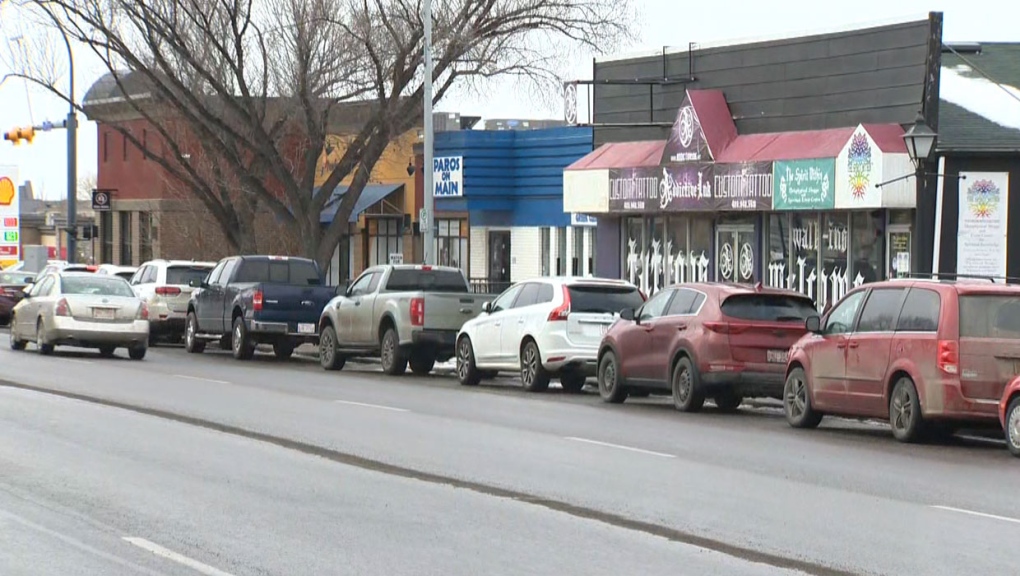Residential taxpayers won't be on the hook for Airdrie's downtown development, province says
 The City of Airdrie has been accepted into the provincial government's community revitalization levy program, which will help provide funding for the city's planned infrastructure developments without having to raise the residential property tax rate.
The City of Airdrie has been accepted into the provincial government's community revitalization levy program, which will help provide funding for the city's planned infrastructure developments without having to raise the residential property tax rate.
The provincial government says it is moving ahead with a plan to use a financial tool that allows municipalities to borrow against future tax revenues to fund a revitalization project for downtown Airdrie.
On Wednesday, officials announced details of the city's plan to use a community revitalization levy (CRL) as a way to transform Airdrie's downtown district.
Under the CRL, future property tax revenue will be used to pay for infrastructure developments so that private investors have the opportunity to come in and grow the municipality's tax base.
Officials call it a "useful" tool for development without putting undue pressure on the residential tax rate.
"This tool is very good news for the residents of Airdrie," said Alberta's Minister of Municipal Affairs Rebecca Schulz.
"In times like this, Albertans want to see our government invest in future growth and prosperity. They also want to see government who are responsible with tax dollars."
Airdrie Mayor Peter Brown says the city has put a lot of work into its downtown plan, which was released last year.
"People don't want to see empty lots in our downtown. We need to bring more residents and visitors to our downtown," he said.
"The downtown plan outlines what we need to do, but the CRL will hopefully make sure that that happens."
Brown says the CRL funds will be used to remove financial barriers for development such as environmental site assessments and assistance to remediate contaminated areas.
It will also be used to develop parking spaces so visitors and residents can access businesses and integrate Nose Creek into the downtown gathering space.
The plan will also include a strategy to build up, rather than out.
"It's time we got past the four storeys in our community and we need to start building higher density and more opportunities for people to provide different types of businesses and residential opportunities," Brown said.

Schulz says the city "had a very compelling proposal" for its CRL.
"We worked together to address any concerns or issues and to make sure that was processed as quickly as we could review that and approve that proposal. When it comes to municipal funding, three years ago difficult decisions were made.
"2019 feels like a long time ago, but we had an oil price crash, an economic downturn and we did need to make difficult decisions across all levels of government I would say."
The province stands by its CRL program, citing a number of successes in other areas of the province.
"All five existing CRLs in Calgary, Edmonton and Cochrane have proven successful since the program began nearly 20 years ago," Schulz said.
"Alberta Municipal Affairs recently relaunched the CRL with a number of enhancements that will open the door for even more communities to take advantage of this potential."
The CRL is expected to be in place for approximately 20 years, but has an upper limit of 40 years.
Further details can be found online.
CTVNews.ca Top Stories

Mark Carney reaches out to dozens of Liberal MPs ahead of potential leadership campaign
Mark Carney, the former Bank of Canada and Bank of England governor, is actively considering running in a potential Liberal party leadership race should Justin Trudeau resign, sources tell CTV News.
'I gave them a call, they didn't pick up': Canadian furniture store appears to have gone out of business
Canadian furniture company Wazo Furniture, which has locations in Toronto and Montreal, appears to have gone out of business. CTV News Toronto has been hearing from customers who were shocked to find out after paying in advance for orders over the past few months.
WATCH Woman critically injured in explosive Ottawa crash caught on camera
Dashcam footage sent to CTV News shows a vehicle travelling at a high rate of speed in the wrong direction before striking and damaging a hydro pole.
A year after his son overdosed, a Montreal father feels more prevention work is needed
New data shows opioid-related deaths and hospitalizations are down in Canada, but provincial data paints a different picture. In Quebec, drug related deaths jumped 30 per cent in the first half of 2024, according to the public health institute (INSPQ).
Much of Canada is under a weather alert this weekend: here's what to know
From snow, to high winds, to extreme cold, much of Canada is under a severe weather alert this weekend. Here's what to expect in your region.
Jimmy Carter's funeral begins by tracing 100 years from rural Georgia to the world stage
Jimmy Carter 's extended public farewell began Saturday in Georgia, with the 39th U.S. president’s flag-draped casket tracing his long arc from the Depression-era South and family farming business to the pinnacle of American political power and decades as a global humanitarian.
'A really powerful day': Commemorating National Ribbon Skirt Day in Winnipeg
Dozens donned colourful fabrics and patterns Saturday in honour of the third-annual National Ribbon Skirt Day celebrated across the country.
Jeff Baena, writer, director and husband of Aubrey Plaza, dead at 47
Jeff Baena, a writer and director whose credits include 'Life After Beth' and 'The Little Hours,' has died, according to the Los Angeles County Medical Examiner.
Hundreds of animals killed in Dallas shopping centre fire
A fire that broke out at a shopping center in Dallas on Friday morning killed more than 500 animals, most of which were small birds, authorities said.

































